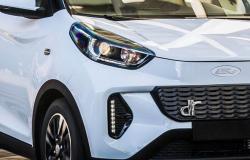Long-duration energy storage, or LDES, is attracting rapid interest around the world as the day approaches when it will overtake lithium-ion batteries in some markets and as plans of decarbonization become more ambitious.
BloombergNEF’s (BNEF) inaugural survey on the costs of long-duration energy storage shows that while most long-duration energy storage technologies are still in their early stages and are expensive compared to ion batteries lithium, some have already achieved or are about to achieve lower costs for longer durations.
BNEF, which has studied seven LDES technology groups and 20 technology types in this report, says that less expensive technologies already provide cheaper storage than lithium-ion batteries for durations greater than eight hours. Thermal energy and compressed air storage, for example, had an average capital expenditure, or capex, of $232 per kilowatt-hour and $293/kWh, respectively.
For comparison, lithium-ion systems had an average capex of $304/kWh for four-hour systems in 2023, so this is generally shorter-term storage.
Flow and compressed air
The so-called flow batteries and compressed air technologies have had the most commercial success so far, which could help ensure greater cost reductions in the future. The pace of cost reduction for LDES technologies will largely depend on expanding deployment and developing commercialization pathways in major regions.
BNEF anticipates that the typical time it takes for energy storage assets to discharge or charge will increase in the future as the technology displaces fossil fuel generators and is used to address intermittent sources of renewable energy.
LDES technologies can add more energy storage without adding more energy conversion capacity, so they are considered a competitor to lithium-ion batteries. Still, the costs of LDES are unlikely to fall as quickly as those of lithium-ion batteries this decade, since the latter are widely used in both the transportation and energy sectors, and this Demand will drive down the cost of technology.
China, as in everything, where cheaper
China currently leads the profitability of established technologies such as compressed air energy storage, flow batteries and thermal energy storage. Average capex in non-Chinese markets is 68% higher for compressed air storage, 66% higher for flow batteries and 54% higher for thermal energy storage.
Yiyi Zhou, clean energy specialist at BloombergNEF and co-author of the report, said: “The significant cost disparity is largely due to China’s greater adoption of LDES technologies. While other countries are still in the early phases of commercializing LDES technologies, China is already developing gigawatt-hour-scale projects, driven by favorable policies. This is especially true for compressed air energy storage and flow batteries, where China has set new project size records over the past two years. The pace of LDES installations in China is astonishing.”
Despite China’s lower costs, that country’s LDES technologies may struggle to compete with domestically produced lithium-ion batteries, which are the cheapest in the world. Currently, only a few LDES technologies, such as compressed air storage in natural caverns, can compete with lithium-ion batteries in terms of per-unit capital costs.
Better, outside of China
LDES technologies are more likely to compete with lithium-ion batteries in non-Chinese markets, where lithium-ion batteries are more expensive.
Evelina Stoikou, senior associate for energy storage at BloombergNEF and co-author of the report, said: “Although the costs of LDES technologies outside China are higher, the US and Europe have the opportunity to invest in their own industries and drive innovation. and deployment. Markets outside China are developing a wider range of technologies compared to China, including more types of technology within flow batteries, compressed air, compressed gas, thermal, gravity and novel pumped hydro. “We have seen interest in these regions driven by ambitious clean energy goals, higher costs of lithium-ion batteries, and an effort to develop alternative technologies that do not rely on lithium.”
Storage duration, project size and location greatly affect the capex of LDES. Gravity energy storage systems, which raise weights when loaded and lower them in a controlled manner when unloaded, have the highest average cost, $643/kWh.
Continued technological advances and deployment experience will further improve the viability and performance of these storage options for long-duration applications. Enabling policies and support mechanisms are essential to drive early adoption and accelerate commercialization.






